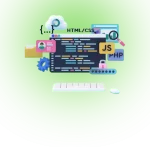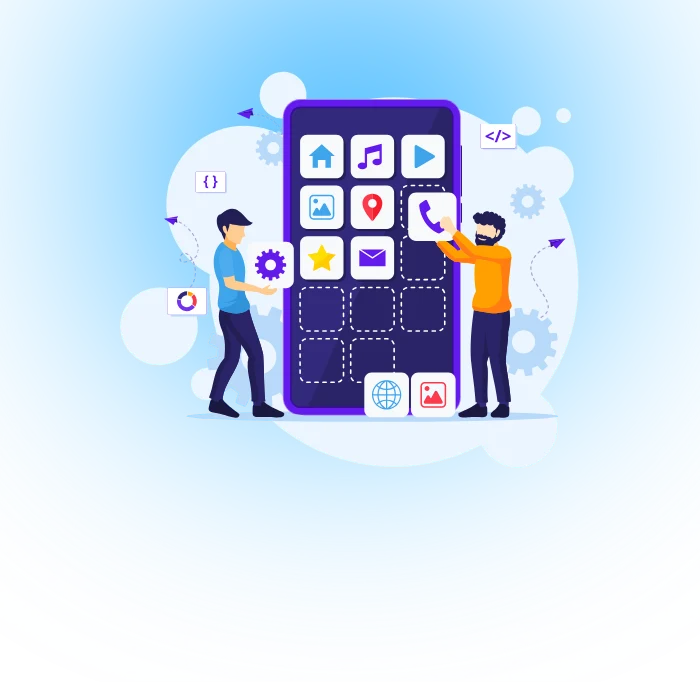Introduction
In today’s digital-centric world, education apps have exploded in popularity for enabling more engaging, personalized, and effective learning experiences beyond the confines of traditional classrooms. Education apps cover a diverse range of categories – from games that teach coding skills or math concepts, to flashcard study tools, adaptive online courses, and administrative portals for tracking grades and assignments, and more.
However, while thoughtfully designed education apps provide immense value, developing a custom education app requires a significant investment in strategic planning, user research, technical resources, and financial budgeting. Costs can quickly scale if the complexity and scope are not managed diligently throughout the process.
In this comprehensive guide, we’ll break down the major factors that influence education app development costs so you can plan and budget appropriately. You’ll get detailed estimates and pricing breakdowns for:
Simple MVP education app builds
Intermediate-level apps with robust feature sets
High-end enterprise education platforms and software
Whether you want to build an app for your school, university, or district, launch an ed-tech startup, develop corporate eLearning programs, or create your online courses, read on to gain insights into strategically maximizing return on investment for your education app development initiative.
Key Factors That Influence Education App Development Costs
As you estimate costs for your education app project, several core factors contribute significantly to the overall investment required to design, develop, launch, and support a custom-built solution tailored specifically to your needs:
App Complexity and Feature Scope
The number of features, app screens, and overall complexity have a direct correlation to development efforts and costs. For example:
Basic 10-screen flashcards or puzzle apps can be built affordably with lightweight workflows.
Highly sophisticated online course platforms with 40+ screens and extensive interactive simulations require much more design and engineering work.
Carefully identifying the optimal feature set and scope needed for your target students, teachers, and use cases is crucial, while removing unnecessary “bells and whistles” that add minimal value. Prioritizing “must-have” over “nice to have” features is key, especially for initial launches.
Custom Design and Branding
Generic templated app designs with stock elements can be created for far less cost versus extensively customized UI/UX design and visual branding aligned seamlessly with your educational institution or edtech company’s existing brand style. Creative and strategic design adds cost but creates superior engagement.
Platforms Supported
Supporting both major mobile platforms – iOS and Android – effectively doubles the core development efforts compared to initially launching your education app on just one platform. You also must absorb fees to publish your app in both the Apple App Store and Google Play Store.
Integrations and Backend Infrastructure
Connecting your education app experience to existing school databases, payment systems, external APIs, analytics programs, and other business systems adds considerable development complexity for building those integrations. Deep integrations enable more seamless experiences but add more labor hours.
Advanced Security and Compliance Considerations
Student data is extremely sensitive. Building education apps to stringent security standards with encryption, authentication protocols, access controls, and thorough testing is essential for protecting privacy. This adds development overhead.
Content Creation
The costs involved in creating educational content assets like videos, quizzes, instructional articles, interactive lessons, and other multimedia elements must be accounted for. Sadly, quality content doesn’t create itself. Factor these content production expenses in addition to pure engineering costs.
Hosting Infrastructure Requirements
Enterprise-grade hosting infrastructure on robust cloud servers is necessary for delivering education apps at scale, especially if supporting bandwidth-heavy video streaming. This adds substantial monthly/annual expenses beyond basic shared hosting used for lightweight websites. Performance and uptime are critical.
By scoping these cost drivers from the start, you can strategically plan tradeoffs to keep your education app on schedule and within budget constraints. Now let’s analyze typical cost ranges.
Typical Cost Ranges for Custom Education App Development
Based on the platform feature requirements, complexity factors, and target audience, education app development projects often fall within three pricing tiers:
1. Basic Education App Costs
For straightforward education apps with a core set of features such as:
Student registration and user profiles
Course materials, assignments, and syllabus
Simple quizzes, tests, and assessments
Push notifications for new content or deadlines
Progress dashboards for tracking lesson completion
Calendars for due dates and schedules
Expect base development costs in the range of:
$25,000 – $75,000
This budget supports creating clean, polished UI/UX mobile experiences or web apps and integrating basic API data connections to existing systems for core education workflows. Limiting complexity helps control overall costs.
2. Intermediate Education App Costs
For medium complexity education apps supporting more advanced features such as:
User management and access controls
Payment processing and subscription management
Interactive game-based quizzes and lessons with rich media
Discussion forums and in-app messaging
Analytics dashboards and grading workflows
Calendar syncing with school schedules
Parent and guardian access portals
Offline mode support
Costs for intermediate education apps typically range from:
$75,000 – $150,000+
This allows exploring more customized designs, advanced interactivity, multi-media content integration, and robust features while still keeping the end-user experience focused on essentials. More sophisticated infrastructure is required for quality assurance and reliable scale.
3. High-End Education App Costs
For cutting-edge, enterprise-level education apps and platforms powering sophisticated capabilities such as:
AI-driven recommendations and personalization
Immersive AR/VR learning experiences
Live video classrooms and teaching
Adaptive learning through advanced algorithms and analytics
Individualized learning plans and coaching
Teacher collaboration tools and workflows
Campus news, events, and notifications -Alumni/Student community engagement
Micro-certification and credentials
Professional development and training
Conference and campus management
Marketing automation
Expect development pricing ranging from:
$150,000 – $500,000+
This tier provides a sufficient budget for market-leading innovation and customization – but also demands diligent planning and development processes plus continuous improvement and maintenance post-launch.
By conservatively scoping features to validate learning needs and usage data, education organizations can build within their budgets while still delivering excellent digital learning experiences that drive measurable gains in student success.
Ongoing Annual Costs for Support & Maintenance
While the initial app development investment is significant, supporting and enhancing an education app over time has related ongoing costs including:
Ongoing server hosting fees and technical infrastructure
Addressing software bugs and optimizing performance
Regularly adding new features based on user feedback
Managing external integrations and internal data pipelines
Monitoring security protocols and compliance requirements
Expanding to support more platforms and devices
Marketing and user acquisition costs for growth
Generally, plan for allocating at least 15-20% of the initial development costs on an annual basis for maintenance and iteration. Calculate total multi-year costs, not just the initial build expense.
How to Strategically Plan Your Education App Development Budget
When structuring an optimal budget for your education app initiative, focus on:
Tightly aligning potential features with specific learning objectives, student/teacher needs, and pain points based on thorough user research. Avoid “nice-to-have” feature bloat.
Prioritizing must-have functionality for your MVP launch then scaling via phased enhancements. Secure core utility before accessorizing.
Evaluating your revenue model and monetization strategy – subscriptions, in-app purchases, etc. Price according to value delivered.
For institutions, calculate the ROI across critical metrics like student enrollment, retention, satisfaction, career placement and how an app could significantly improve outcomes.
Exploring financing options if needed to help spread larger development costs over time. Government grants may also be available for certain education apps.
Considering managed services offerings from specialist ed-tech development firms versus in-house recruiting and training more generalized mobile teams – both approaches have tradeoffs.
While building excellent education apps requires substantial upfront and ongoing investment, the learning and institutional efficiency payoff make it worthwhile if executed thoughtfully.
Conclusion
Developing a custom education mobile or web app tailored specifically for your student and educator needs typically requires a significant financial investment with costs often ranging from:
$25,000 to $75,000+ for straightforward “MVP” app builds with limited feature sets
$75,000 to $150,000+ for intermediate-complexity apps supporting more robust capabilities
$150,000+ for high-end, enterprise-level platforms with cutting-edge feature sets
Factor about 15-20% of initial development costs per year for allocating towards ongoing maintenance, support, enhancements, infrastructure, security, and user growth.
By aligning features tightly to validated learning objectives and real student needs identified through research, education apps can deliver outstanding ROI through improved learning outcomes, student satisfaction, retention, career placement, and overall institutional efficiency. With smart planning and budgeting, the investment pays dividends.
FAQs
What is Education App?
An education app is a mobile app or web application designed to facilitate learning, provide educational content and support interactive learning experiences.
How much does it cost to make an educational app?
Cost to build an educational app typically ranges from $5,000 to $150,000+, depending on features, complexity, platform (iOS, Android, or both), design and development team.
How long does education application development take?
Education app development typically takes 2 to 10 months, depending on app complexity, features, design requirements and platform choice.
What are the trends in educational application development?
Most significant trends in educational application development for 2025 include AI-driven personalization, microlearning modules, blockchain-based certification and increased emphasis on accessibility, analytics and offline capabilities
What are the benefits of education app development?
Education app development offers cost-effective, personalized, and accessible learning solutions, boosting engagement and efficiency for both students and schools.
How to earn on educational app development?
Earn from educational app development by offering subscriptions, freemium features, in-app purchases, ads, paid courses, or B2B partnerships; scalable models ensure profitable, recurring revenue
How to reduce Education App Development Cost?
Cut education app development costs by building an MVP, opting for cross-platform tools, outsourcing smartly, using ready-made solutions, and focusing on must-have features only.
What are the different monetization strategies for edtech app?
Various monetization strategies for edtech apps include subscriptions, freemium models, in-app purchases, advertising, partnerships, B2B licensing, and offering certifications. These methods help generate recurring revenue, expand user base, and maximize app profitability






